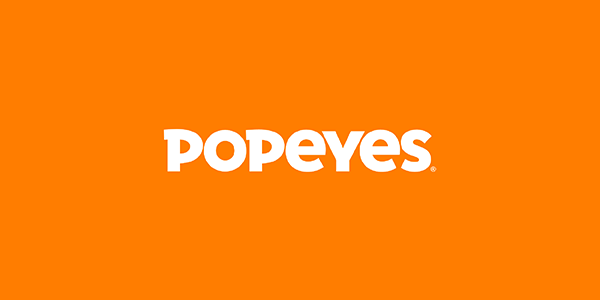How Programmatic Advertising Can Help Brands In a Time of Crisis

You never think a crisis will happen to your organization. Then, it does, with no warning and little time to respond.
Whether it be a technological failure, product recall or customer incident, implementing the right crisis communications strategy can help an organization save its brand and reputation.
Communication methods, such as social, email, and paid search are commonly used during times of crisis to quickly reach the right audience. But once those channels have been exhausted, programmatic advertising can be used as part of a multi-channel strategy to help spread your message even further.
In this blog post, we’ll give you a quick primer on crisis communications and share tips on how to use programmatic advertising to reach the right audience when it really matters.
What Is Crisis Communications?
At its core, crisis communications involves developing and implementing communications strategies to quickly disseminate information during an unexpected event that could damage a brand’s reputation or lead to legal, financial, and safety risks. During times of crisis, doing so is integral to maintaining an organization’s reputation, credibility, and relationship with the public, employees or investors, which could be permanently damaged without the proper steps or procedures in the aftermath of a crisis.
Having a team dedicated to implementing a crisis communication strategy is often crucial to an organization’s survival.
A 2023 survey by Capterra found that only 49% of US businesses had a formal communication plan in place for a crisis. That said, those that did either found it very (77%) or somewhat (21%) effective.
3 Reasons Why Programmatic Advertising Can Help During a Crisis
There are three main advantages of using programmatic advertising as part of your crisis communications strategy: time, scale, and targeting.
Time
During a crisis, time is of the essence. Information needs to reach your target audience with speed and accuracy. As more time passes, the organization’s reputation diminishes, along with the customer’s loyalty.
Programmatic advertising allows you to deliver real-time, targeted messages to your audience, ensuring that crucial information reaches them when it matters most.
Scale
Programmatic advertising can be used to reach customers locally, nationally or globally in a mere matter of minutes. With the flexibility that scalability offers, you can reach your audience in real time, adjust your messaging based on changing circumstances, and reduce or expand your ad spend as needed based on the situation.
Targeting
Programmatic advertising allows for precise targeting, ensuring you reach the right people during a crisis. Targeting your loyal customers with important messaging can help you demonstrate your commitment, provide timely updates, and show that you’re actively managing the situation and providing support.
Common Types of Crises
A crisis within an organization can take many forms. Whether it be online, in-store or globally, a company needs to be prepared for every situation. Here are some examples of common crises that organizations may have to face.
Technological Failures
The ever-changing nature of technology means there’s more room for mistakes. Website or app outages, data breaches, and bugs are some common examples of situations where an organization may need to implement a crisis communications strategy.
It’s important to keep your target audience updated about what your organization is doing to resolve the situation. Without timely updates and messaging that addresses the situation, consumers might not be willing to partner with your organization in the future.
Product Recalls
Whether it’s a contaminated consumer goods product, an electronic item that doesn’t work, or something that poses a serious safety risk to a consumer, product recalls can have a major impact on a brand’s bottom line and reputation.
It’s important that organizations react right away by informing customers to dispose of a product, return it, or seek medical advice. It’s also important for companies to address which standards will be taken in the future to ensure any issues don’t happen again.
Negative Customer Experiences
Thanks to social media, sharing a video with one click has made spreading the word about an unfortunate incident at a restaurant or store easier than ever.
With little background or context, a 15-second clip can get blown out of proportion and cause consumers to take sides immediately.
Be prepared to investigate the situation and communicate any actions that will be taken to prevent similar issues in the future.
How to Leverage Programmatic Advertising for Crisis Communications
Organizations can use programmatic advertising to reach their intended audience across various platforms and channels with more precision than simply publishing a press release or social media post. Here are some ways you can leverage programmatic advertising for crisis communications:
Use a Multi-Channel Strategy to Fill Any Communication Gaps
Having different ways to communicate is crucial for reaching your intended audience during a crisis. If you rely on only a few channels, like email or social media, you might not reach everyone. This could cause some people to miss important information and create unnecessary confusion.
Leveraging a multi-channel strategy is the most effective way to reach your desired audience. Using different channels, such as native, display, video, connected TV (CTV), audio, in-game, and digital out-of-home (DOOH), helps maximize your reach and ensures you don’t miss out on audience segments who might not have seen your messaging otherwise.
Leverage Contextual Targeting to Provide More Context
Contextual targeting is a tactic in programmatic advertising that places ads based on the content a person is viewing. This approach improves ad relevance by matching your ads with the themes or topics of the page they’re on.
For example, if a tech company recently experienced a public data breach, they could target in context phrases related to their company, cyber security, and data privacy to reach customers and audiences reading about the situation or similar topics. They could fine-tune the messaging in their ads to address concerns directly, emphasize their commitment to data security or direct them to a press release or message from the company’s CEO highlighting the steps they’re taking to prevent future issues, helping to rebuild trust and repair their brand reputation.
Use Retargeting to Connect With Previous and Potential Customers
Retargeting can be used during a crisis to re-engage customers or people who have previously shown interest in your brand, reminding them of your commitment to resolving the issue and reinforcing key messages to maintain their trust.
For example, let’s say you’re an e-commerce snack brand that’s forced to do a product recall due to a potential contamination that could pose serious health risks to consumers. To effectively communicate this recall and ensure that affected customers receive any necessary information, you could implement a retargeting strategy leveraging 1st-party data to identify customers who have previously purchased the product or visited your site online. This would help ensure you’re targeting direct customers or people familiar with your brand who may have missed any initial announcements on other channels.
Retargeting could also be used to improve brand awareness by reminding customers of your brand’s values and proactive response to the situation, strengthening their trust by reassuring them that you’re actively addressing the situation.
Refine Your Targeting With Geotargeting
Additionally, during a crisis, if the issue is centralized to a particular area or number of stores, your organization probably doesn’t want to draw further negative attention by having your message go out to the whole world.
Instead, you can use geotargeting to reach affected areas based on the country, state, or zip code. This allows you to further refine your targeting and ensure your messaging is primarily seen by the people who were or could be directly impacted by a situation.
For example, if a grocery chain discovered a food safety issue at a specific location, they could use geotargeting to target customers within that store’s vicinity. This ensures that only those who may have been affected are targeted, avoiding unnecessary alarm in unaffected regions and allowing the company to manage the situation more effectively. Advertisers could also use geotargeting to promote sales or customer appreciation days in the affected regions, improving the brand’s reputation and incentivizing customers to continue shopping with the brand.
Why Not Try Programmatic Advertising
Programmatic advertising provides endless opportunities to help educate consumers about what your organization is doing to mitigate a crisis and what steps are being taken to prevent it from occurring again in the future.
If you’re ready to add programmatic to your media mix, request a demo.






